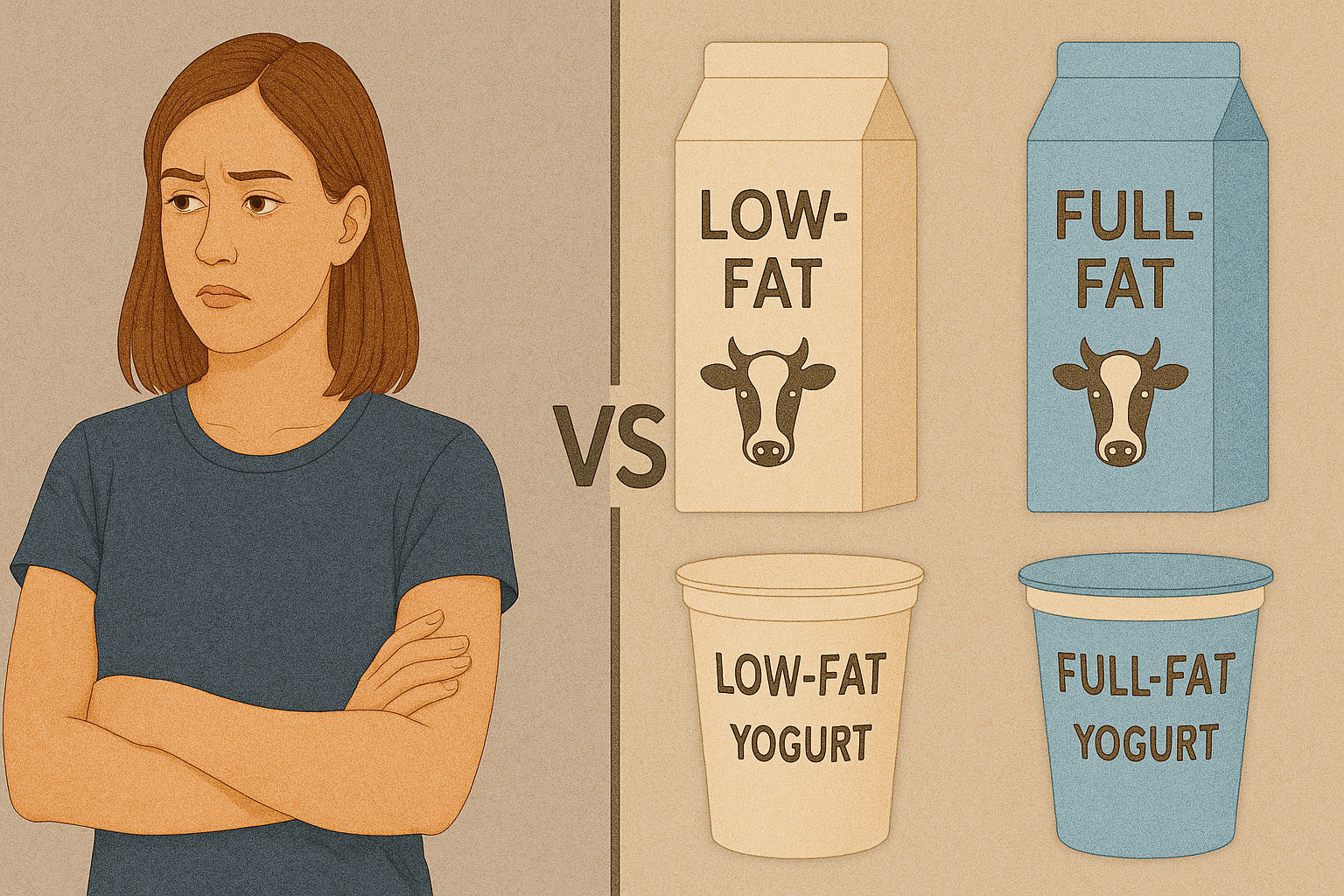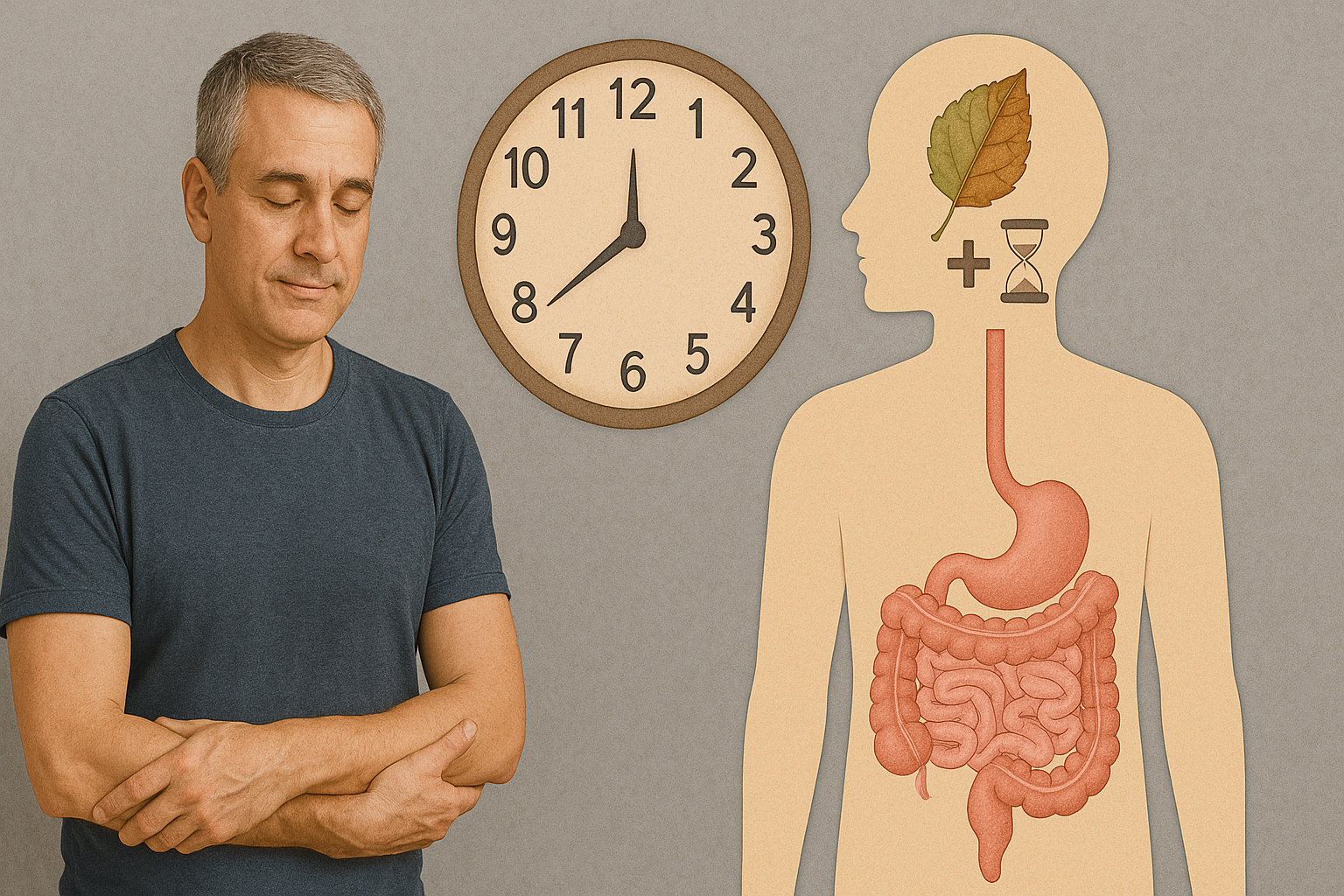Now Reading: Low-Fat vs Full-Fat Foods: Which Is Actually Healthier?
-
01
Low-Fat vs Full-Fat Foods: Which Is Actually Healthier?
Low-Fat vs Full-Fat Foods: Which Is Actually Healthier?

For years, we’ve been told to steer clear of fat — especially saturated fat. Supermarket shelves filled with “low-fat” or “fat-free” products, from yogurt to cookies, reflect how much we’ve absorbed this message. But is choosing low-fat really the healthier option, or are full-fat foods making a comeback for good reason?
Let’s unpack the differences, bust some myths, and discover what science says about low-fat vs. full-fat foods — and what may be better for your body and overall health.
What’s the Difference Between Low-Fat and Full-Fat Foods?
First, let’s get clear about what these labels mean. A low-fat food is generally defined as a product that contains 3 grams of fat or less per serving. In contrast, full-fat refers to foods that have not had fat removed or replaced.
For example:
| Food | Full-Fat (per serving) | Low-Fat (per serving) |
|---|---|---|
| Greek Yogurt | 10g fat | 2g fat |
| Milk | 8g fat (Whole) | 0-3g fat (Skim/Low-fat) |
| Peanut Butter | 16g fat | 12g fat (Low-fat version often adds sugar) |
At first glance, it seems logical: less fat = healthier. But the truth is a bit more complicated.
Why Did Low-Fat Diets Become Popular?
Back in the 1970s and 1980s, early studies linked saturated fats to heart disease. Public health guidelines soon pushed for reducing fat intake. The food industry responded with lower-fat versions of everything—ice cream, salad dressings, even cookies!
But here’s the issue: when manufacturers reduce fat, they often replace it with sugar or refined carbohydrates to keep things tasty. That swap may actually be worse for your health in the long run.
The Sugar-Fat Tradeoff
Low-fat versions may skimp on the fat—but they ramp up the sugar. Over time, that means more blood sugar spikes, more cravings, and higher risks for conditions like type 2 diabetes and obesity.
What the Research Says: Low-Fat vs Full-Fat
Here’s where things get interesting. Recent studies suggest full-fat foods might not be the villain they were once thought to be.
- Dairy fat might actually support heart health. A 2021 study published in PLoS Medicine found that people with higher levels of certain dairy fats in their blood had a lower risk of cardiovascular disease.
- Full-fat foods may help with weight management. Why? They’re more satisfying. Fat makes us feel full, so we’re less likely to overeat later.
- Some fats are good fats. Unsaturated fats—found in nuts, seeds, olive oil, and avocados—can reduce inflammation and improve heart health.
Comparison of Health Impacts
| Category | Low-Fat Foods | Full-Fat Foods |
|---|---|---|
| Satiety (Feeling Full) | Lower (may feel hungry sooner) | Higher Satiety |
| Energy Density | Lower, but often with extra sugar | Higher, but more satisfying |
| Heart Health | Depends on sugar content | Neutral or positive (if unprocessed) |
Is All Fat Good for You?
Nope. While full-fat foods aren’t inherently bad, quality matters. There’s a big difference between the fats in an avocado and those in a deep-fried donut.
Types of Fat 101
| Fat Type | Found In | Health Impact |
|---|---|---|
| Unsaturated Fat | Olive oil, avocados, nuts, fish | Good for heart health |
| Saturated Fat | Butter, cheese, red meat | Controversial; moderation is key |
| Trans Fat | Processed snacks, fried foods (banned in many places now) | Harmful — avoid entirely |
It’s not about cutting out fat—it’s about choosing the right kinds of fat and balancing them.
Personal Story: My Experience Trying Both
Years ago, I jumped hard on the low-fat trend. My fridge was filled with fat-free yogurts and 1% milk. But I was always hungry—and always craving sweets. Once I started switching to full-fat—and cutting back on processed foods—I felt fuller longer, my sugar cravings dropped, and I actually lost a little bit of weight just by eating mindfully.
I’m not alone. Many people find that full-fat foods help control appetite and reduce the constant “snack attacks.”
So, Which Is Healthier: Low-Fat or Full-Fat?
The answer isn’t one-size-fits-all. But here’s the bottom line:
- Low-fat foods can be helpful if you’re watching calorie intake and they’re not loaded with added sugar.
- Full-fat foods can offer better satiety, more flavor, and potentially better health outcomes — as long as you’re choosing healthy sources and keeping portions in check.
Think about the whole food, not just the fat content. A full-fat Greek yogurt is likely healthier than a fat-free one packed with added sugar. Similarly, peanut butter with just peanuts and salt beats a “light” version with fillers any day.
Tips for Making Smart Fat Choices
If you’re trying to eat healthier fats, here are some practical tips:
- Read the labels. Look at sugar and ingredient lists — not just fat grams.
- Go for whole foods. Foods closer to nature (like full-fat plain yogurt or an avocado) are often best.
- Limit processed items. Many low-fat snacks are processed and high in refined carbs or sugars.
- Watch portion sizes. Full-fat foods are more calorie-dense, so moderation still matters.
Conclusion: It’s Time to Rethink Fat
Fat isn’t the enemy we once feared. In fact, moderate intake of healthy, full-fat foods may actually support everything from heart health to a balanced waistline. The key lies in choosing quality over quantity and embracing balance over extremes.
If you’re trying to make smarter food choices—don’t blindly go for the “fat-free” label. Read between the lines, keep it real, and listen to what makes your body feel its best. That’s what true nutrition is all about.
Sources
- UChicago Medicine – Low-Fat vs Full-Fat Foods: Which Are Healthier?
- PLOS Medicine Study on Dairy Fat and Heart Health (2021)
- Harvard T.H. Chan School of Public Health – The Nutrition Source: Types of Fat
- Effects of Saturated Fats Revisited: A Meta-analysis by the American Journal of Clinical Nutrition









